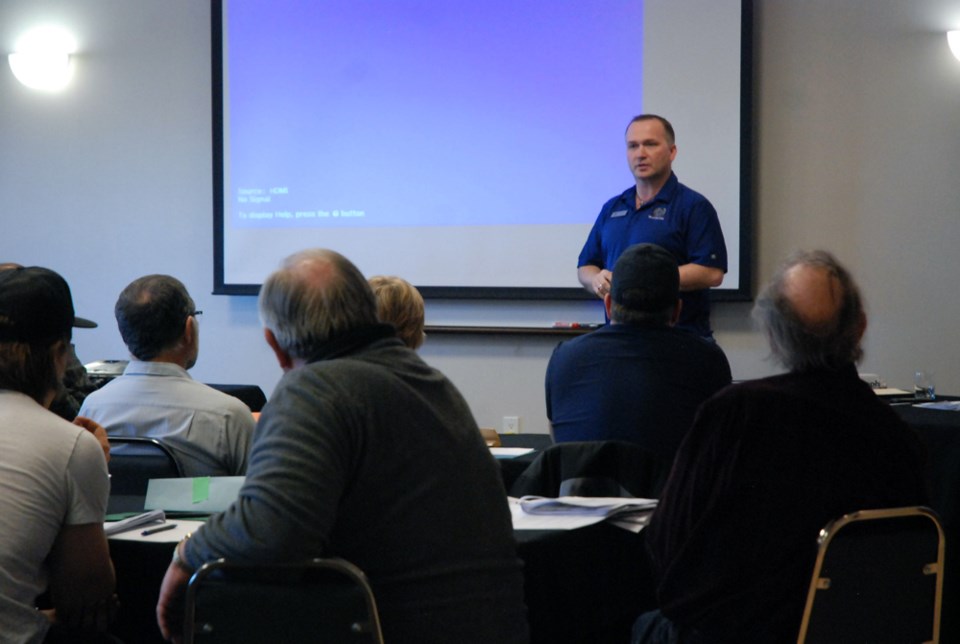It’s been a growing movement in recent years, so it was only a matter of time before Humboldt saw that movement make its way here. Pro-Cert Organic held a Transitioning to Organic Farming workshop at the Canalta Hotel on April 2 to inform farmers of its benefits versus conventional farming.
“There were a lot of different ideas on how to do it because a lot of these people haven’t done agriculture that way since their grandparents,” said Paul-Emile L’Heureux, a board member for Saskatchewan Organics. “The big difference is the conventional farmer has a chemical for all his problems whereas the organic farmer has to plan ahead to see that he doesn’t have those problems.”
The whole concept of organic farming is based on getting rid of the use of chemicals. As alternatives, farmers would have to invest more time in actually caring for the soil, tilling it, and reintroducing nutrients from products such as alfalfa, legumes, and grasses back into the crop rotation.
It would actually be similar to the way agriculture was done 70 years ago, before chemical sprays were introduced. It’s a key factor Pro-Cert has been pushing, as well as the problem with trying to transition now. A few generations have passed since producers began the current conventional farming, so they don’t know any other way. Moreover, it takes three years for a farmer to become organic certified, which is a risk not many are willing to take. They often have thousands already invested into equipment like tractors and combines for their conventional method.
“Why are farmers wary? There are a number of barricades. The number one is the knowledge gap. That three and a half generation gap is big, so a young farmer that doesn’t have any continuity with his ancestor has a problem,” said Wallace Hamm, president of Pro-Cert. “The basic conventional farmer is programmed and equipped mentally to carry on what he’s been doing.”
According to L’Heureux, this all began in the 1950s with the advent of chemical sprays. He says producers were “brainwashed” by the convenience of the product bring marketed. They were told they could use the spray, farm more land, and get more bushels of crop easily. Back then, they weren’t aware of the toxic repercussions.
As a result of those chemicals, Hamm says the biggest issue currently facing the industry is herbicide-resistant weeds. Furthermore, the cost of nitrogen and phosphorous in fertilizer is increasing. Phosphorous in particular is finite, so once it runs out, farmers could be forced to resort to traditional farming anyway.
“I believe that without any fertilizer or pesticides, if we needed to, we could feed the whole world organically,” said Hamm. “We did it once, we’re still doing it in third world countries, and we can do it again.”
With the rising awareness of the dangers of chemical spray, more people are switching to organic products. Hamm says demand is actually outstripping supply, so he’s surprised there hasn’t been more producer uptake. Even at the meeting in Humboldt, there were only a couple dozen people in attendance.
“The people that attend these meetings have already decided that this conventional farming thing is not doing well and have already started thinking about this organic thing,” he said. “They’ve done the reading. They’re not just browsing, they’re in the process of decision-making.”
The point that Hamm really wants to drive home is that although it takes a bit more time to farm traditionally, producers can spend half as much and still make twice as much as conventional farming. The value comes from the quality of the product produced.
For now though, Hamm says he understands that it’s slow going. Most of the farmers who learn about organic farming aren’t going to make the switch anytime soon.
Nevertheless, this meeting was a sign that the movement is growing.
“All you’re seeing at this meeting is a commercialized version of this movement,” he said. “The movement is still alive, the concept is still alive, but there’s a strong driving force from the consumer end to have food that’s healthy for themselves and their family.”




